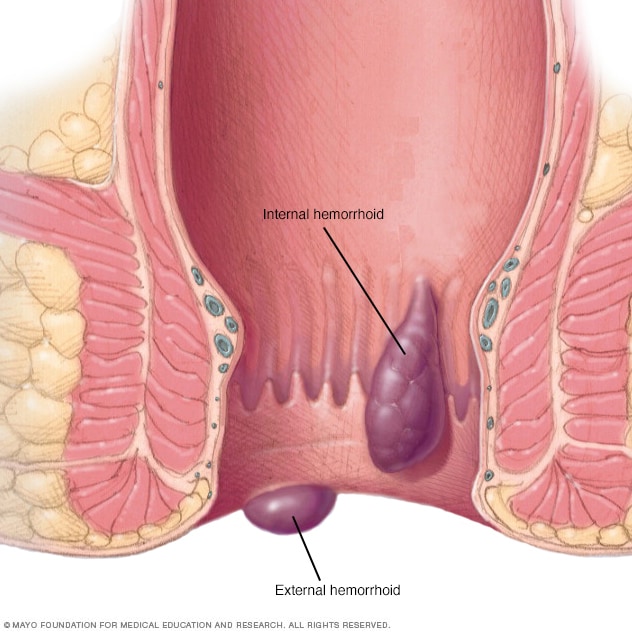The most common cause of external hemorrhoids is repeated straining while having a bowel movement. Hemorrhoids develop when the veins of the rectum or anus become dilated or enlarged and can be either “internal” or “external.” External hemorrhoids are usually found beneath the skin that surrounds the anus.
- itching around the anus or rectal area
- pain around the anus
- lumps near or around the anus
- blood in the stool
You may notice bleeding when using the bathroom. This includes seeing blood on toilet paper or in the toilet. Lumps around the anus may feel as if they are swollen.

The most common cause of hemorrhoids is repeated straining while having a bowel movement. This is often caused by severe cases of constipation or diarrhea. Straining gets in the way of blood flow into and out of the area. This results in the pooling of blood and enlargement of the vessels in that area.
Pregnant women may also be at an increased risk of hemorrhoids because of the pressure that the uterus places on these veins.
Hemorrhoids can be treated a few ways depending on severity. Your doctor may ask if you have any preference for certain types of medications or treatments.
Some general treatments that your doctor might suggest include ice packs to reduce swelling, suppositories, or hemorrhoid creams.
These options can offer relief to individuals who have a milder case of hemorrhoids. If you have a more severe case, your doctor may suggest treatment with a surgical procedure.
Surgical treatments include:
- removal of hemorrhoids, known as hemorrhoidectomy
- burning of hemorrhoid tissue with infrared photo, laser, or electrical coagulation
- sclerotherapy or rubber band ligation to reduce the hemorrhoids
The main factor for preventing external hemorrhoids is to avoid straining during bowel movements. If you have severe constipation, you may want to try using aids such as laxativesor including more fiber in your diet.
Stool softeners are another popular over-the-counter option that can help you with temporary constipation due to pregnancy or other factors. If these options don’t help, you may want to talk with your doctor about other options to reduce strain.

Post a comment